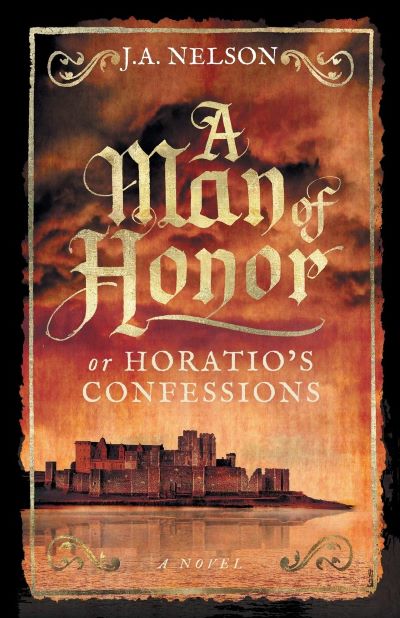review copy provided by author via Historical Fiction Virtual Book Tours
Synopsis:
Rocamora, a novel of 17th century Spain, is based on the life of Vicente de Rocamora, who struggles to make his place in a Spain obsessed with limpieza de sangre, purity of blood untainted by Jew, Moor, or recent convert.
Poet, swordsman, and master of disguise, at the insistence of his family, Vicente enters the Dominican Order and is soon thrust into the scheming political and clerical hierarchies that at Court.
Vicente becomes Confessor and Spiritual Director for King Philip IV’s teenage sister, the beautiful Infanta Doña María, five years younger than he, protégé and possible successor of Inquisitor General Sotomayor, and an invaluable assistant to the King’s chief minister, the Count-Duke de Olivares.
Vicente needs all his skills and cunning to survive assassination by a growing list of ruthless foes in both Church and Court, solve a centuries-old riddle to quell rumors of his own impurity of blood, and above all suppress his love for the seemingly unattainable María.
My Take:
While the novel Rocamora by Donald Michael Platt spans not quite thirty years, it feels like a huge epic tale. The novel doesn't even cover Vicente de Rocamora's whole life, yet it feels like it spans much more time. Vicente's life, as told in the book, is a strange, eventful, dangerous, exciting and rather sad one. An orphaned Vicente is taken in and educated by a family friend with some rather shady connections. Vicente is trained in the art of disguise and the sword. Both of these come in rather handy for Vicente. Even though he winds up a member of the Dominican Order, he maintains his friendship with these less respectable, but often nobler and truer friends of his youth.
It seems that everyone around him has a plan for his life and the only person not consulted is Vicente himself. Everyone seems to see him as a perfect pawn in the various political games being played all around. They want him to spy for them, obtain a title for them, play this role, play that role, and all the while it seems that everyone is bent on thwarting Vicente's own plans for his life.
Rocamora provides a fascinating look at Spain during the early 1600's and provides a very detailed description and some explanation about the influence of the Catholic Church and the power, influence, and intimidation of the Inquisition during this period. I was very impressed with the detailed descriptions of life at court, the dress, the customs, the importance of the purity of family bloodlines in Spain during the 1600's. I learned so much about Spain just from reading this book.
If you like swashbuckling tales of derring-do, or tales of intrigue and scandal or just enjoy history, this is a book for you because it has all of this and much more. I couldn't possibly summarize everything that happens in this story.
About the Author
When I moved to southern California, I began my professional writing career. I sold to the TV series, MR. NOVAK, ghosted YOUR HAIR AND YOUR DIET for health food guru, Dan Dale Alexander, and wrote for and with diverse producers, among them as Harry Joe Brown, Sig Schlager, Albert J. Cohen, and Al Ruddy as well as Paul Stader Sr., dean of Hollywood stuntman and stunt/2nd unit director. Also, options were taken on my unpublished WWII fighter ace novel and several treatments.
After living in Florianópolis, Brazil, setting of my horror novel A GATHERING OF VULTURES, Dark Hart 2007, Briona Glen 2012, I moved to Florida where I wrote as a with: VITAMIN ENRICHED, pub.1999, for Carl DeSantis, founder of Rexall Sundown Vitamins; and THE COUPLE’S DISEASE, Finding a Cure for Your Lost “Love” Life, pub. 2002, for Lawrence S. Hakim, MD, FACS, Head of Sexual Dysfunction Unit at the Cleveland Clinic.
Currently, I reside in Winter Haven, Florida. My magnum opus historical novel, ROCAMORA, set in 17th century Spain and Amsterdam during their Golden Ages, was released by RAVEN’S WING BOOKS at the end of December 2008. It has been republished by Briona Glen, September 2011. My completed sequel HOUSE OF ROCAMORA was published by Briona Glen November 2012, and I am polishing a completed novel set in the 9th century Carolingian Empire about another unusual historical character, Bodo, the Apostate.
Please visit Donald Michael Platt’s Website for more information.
Virtual Book Tour Schedule
Monday, March 25Review at A Book Geek (Rocamora)
Tuesday, March 26
Review at A Bookish Affair (Rocamora)
Review at Man of a Book (Rocamora)
Wednesday, March 27
Review at Flashlight Commentary (Rocamora)
Thursday, March 28
Review at Book Addict Katie (Rocamora)
Review at Words and Peace (House of Rocamora)
Friday, March 29
Review at Ageless Pages Reviews (Rocamora)
Monday, April 1
Review at Unabridged Chick (Rocamora)
Tuesday, April 2
Review at Rebel PuritAn (Rocamora)
Wednesday, April 3
Review at Book Dilettante (Rocamora)
Thursday, April 4
Review at A Bookish Affair (House of Rocamora)
Review at Flashlight Commentary (House of Rocamora)
Friday, April 5
Review at Book Dilettante (House of Rocamora)
Monday, April 8
Review at Ageless Pages Reviews (House of Rocamora)
Tuesday, April 9
Review at The Musings of a Book Junkie (Rocamora)
Wednesday, April 10
Review at Man of la Book (House of Rocamora)
Review at Unabridged Chick (House of Rocamora)
Thursday, April 11
Review at Turning the Pages (Rocamora)
Friday, April 12
Review at Broken Teepee (Rocamora)
Monday, April 15
Review at Oh, for the Hook of a Book! (Rocamora)
Tuesday, April 16
Review at So Many Precious Books, So Little Time (Rocamora)
Wednesday, April 17
Review at Layered Pages (Rocamora)
Thursday, April 18
Review at Oh, for the Hook of a Book! (House of Rocamora)
Friday, April 19
Review at Broken Teepee (House of Rocamora)
Review at Confessions of an Avid Reader (Rocamora)


















